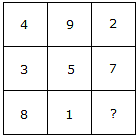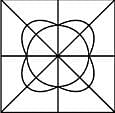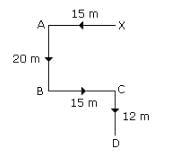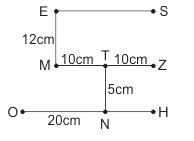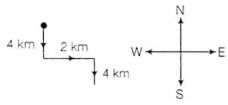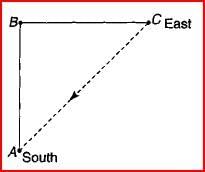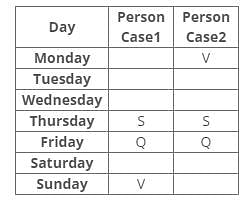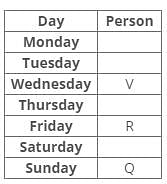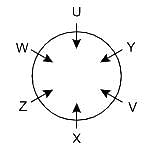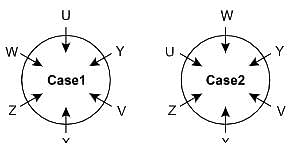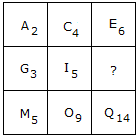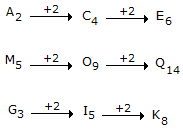WB Police Constable Mock Test - 8 - WB Police Constable MCQ
30 Questions MCQ Test WB Police Constable Mock Test Series 2024 - WB Police Constable Mock Test - 8
Direction: Read the following passages carefully and answer the question that follows.
Seven-year -old Jim came home from the park without his new bicycle. "An old man and a little boy borrowed it. " he explained. "They are going to bring it back at four O'clock,". His parents were upset that he had given his expensive new bicycle, but were secretly proud of his kindness and faith. Came four O'clock, no bicycle. The parents were anxious. But at 4 :30, the door bell rang. and there stood a happy man and a boy , with the bicycle and a box of chocolates. Jim suddenly disappeared into his bedroom, and then came running out. ' All right , ' he said, after examining the bicycle. "You can have your watch back ! " .
Q. When jim came home without his bicycle, his parents?
Seven-year -old Jim came home from the park without his new bicycle. "An old man and a little boy borrowed it. " he explained. "They are going to bring it back at four O'clock,". His parents were upset that he had given his expensive new bicycle, but were secretly proud of his kindness and faith. Came four O'clock, no bicycle. The parents were anxious. But at 4 :30, the door bell rang. and there stood a happy man and a boy , with the bicycle and a box of chocolates. Jim suddenly disappeared into his bedroom, and then came running out. ' All right , ' he said, after examining the bicycle. "You can have your watch back ! " .
Direction: Read the following passages carefully and answer the question that follows.
Seven-year -old Jim came home from the park without his new bicycle. "An old man and a little boy borrowed it. " he explained. "They are going to bring it back at four O'clock,". His parents were upset that he had given his expensive new bicycle, but were secretly proud of his kindness and faith. Came four O'clock, no bicycle. The parents were anxious. But at 4 :30, the door bell rang. and there stood a happy man and a boy , with the bicycle and a box of chocolates. Jim suddenly disappeared into his bedroom, and then came running out. ' All right , ' he said, after examining the bicycle. "You can have your watch back ! " .
Q. Jim returned the watch to the old man and little boy because?
Seven-year -old Jim came home from the park without his new bicycle. "An old man and a little boy borrowed it. " he explained. "They are going to bring it back at four O'clock,". His parents were upset that he had given his expensive new bicycle, but were secretly proud of his kindness and faith. Came four O'clock, no bicycle. The parents were anxious. But at 4 :30, the door bell rang. and there stood a happy man and a boy , with the bicycle and a box of chocolates. Jim suddenly disappeared into his bedroom, and then came running out. ' All right , ' he said, after examining the bicycle. "You can have your watch back ! " .
| 1 Crore+ students have signed up on EduRev. Have you? Download the App |
Direction: Read the following passages carefully and answer the question that follows.
We know that gold and silver are elements. An element consists of atoms of only one kind, unlike water, which consists of both hydrogen and oxygen. Another element is radium. Radium is especially interesting, because it produces heat, When soil is carried by rivers down to the sea and falls to the bottom, it often carries radium in it. As more and more soil is washed down into the ocean. more and more radium is carried in it. There, as elsewhere, it constantly produces heat.
Q. Some heat on the ocean floor comes from?
We know that gold and silver are elements. An element consists of atoms of only one kind, unlike water, which consists of both hydrogen and oxygen. Another element is radium. Radium is especially interesting, because it produces heat, When soil is carried by rivers down to the sea and falls to the bottom, it often carries radium in it. As more and more soil is washed down into the ocean. more and more radium is carried in it. There, as elsewhere, it constantly produces heat.
Direction: Read the following passages carefully and answer the question that follows.
We know that gold and silver are elements. An element consists of atoms of only one kind, unlike water, which consists of both hydrogen and oxygen. Another element is radium. Radium is especially interesting, because it produces heat, When soil is carried by rivers down to the sea and falls to the bottom, it often carries radium in it. As more and more soil is washed down into the ocean. more and more radium is carried in it. There, as elsewhere, it constantly produces heat.
Q. This passage is mainly about?
Direction: Read the following passages carefully and answer the question that follows.
An iron or steel bridge swells (gets larger) when warmed by the Sun and shrink (gets smaller) when it becomes colder. Heat makes everything expand and cold makes everything contract. Cold is the absence of heat. Metals change their size when heated or cooled and this change is noticeable in a bridge that is made of iron or steel. The builder of a bridge must leave empty spaces for the metal to expand into. Have you noticed that concrete sidewalks have cracks every few feet ? These cracks provide space for the concrete to expand into when heated.
Q. This passage is mainly about?
Direction: Read the following passages carefully and answer the question that follows.
An iron or steel bridge swells (gets larger) when warmed by the Sun and shrink (gets smaller) when it becomes colder. Heat makes everything expand and cold makes everything contract. Cold is the absence of heat. Metals change their size when heated or cooled and this change is noticeable in a bridge that is made of iron or steel. The builder of a bridge must leave empty spaces for the metal to expand into. Have you noticed that concrete sidewalks have cracks every few feet ? These cracks provide space for the concrete to expand into when heated.
Q. Empty spaces allow room for a material to?
Direction: Read the following passages carefully and answer the question that follows.
An iron or steel bridge swells (gets larger) when warmed by the Sun and shrink (gets smaller) when it becomes colder. Heat makes everything expand and cold makes everything contract. Cold is the absence of heat. Metals change their size when heated or cooled and this change is noticeable in a bridge that is made of iron or steel. The builder of a bridge must leave empty spaces for the metal to expand into. Have you noticed that concrete sidewalks have cracks every few feet ? These cracks provide space for the concrete to expand into when heated.
Q. Another word for "swells" is?
Direction: Read the following passage carefully and answer the questions. Your answer to these questions should be based on passage only.
If you are worried by the radiation emitted by cell phone towers around you, there is some good news. From September 1, this year, India will lower the level to one tenth of the prevailing standard from 9.2 w/m2 to 0.92 w/m2. The decision follows a report of the inter-ministerial committee formed by the Ministry of communications and Information Technology to study the hazards posed by e.m.f radiation from base stations and mobile phones. Sharma said lowering of the limit is a preventive step against serious health risks posed by radiation emitted from towers which includes the possibility of developing certain types of cancer. The cause and effect relationship though hasn't been established yet. The department of telecommunications has also issued directions for reducing the specific absorption rate, a measure of the amount of radio frequency energy absorbed by the body while using a phone
Q. What is meant by worry in the passages?
Direction: Read the following passage carefully and answer the questions. Your answer to these questions should be based on passage only.
If you are worried by the radiation emitted by cell phone towers around you, there is some good news. From September 1, this year, India will lower the level to one tenth of the prevailing standard from 9.2 w/m2 to 0.92 w/m2. The decision follows a report of the inter-ministerial committee formed by the Ministry of communications and Information Technology to study the hazards posed by e.m.f radiation from base stations and mobile phones. Sharma said lowering of the limit is a preventive step against serious health risks posed by radiation emitted from towers which includes the possibility of developing certain types of cancer. The cause and effect relationship though hasn't been established yet. The department of telecommunications has also issued directions for reducing the specific absorption rate, a measure of the amount of radio frequency energy absorbed by the body while using a phone
Q. What was the outcome of the committee?
Direction: Read the following passage carefully and answer the questions. Your answer to these questions should be based on passage only.
If you are worried by the radiation emitted by cell phone towers around you, there is some good news. From September 1, this year, India will lower the level to one tenth of the prevailing standard from 9.2 w/m2 to 0.92 w/m2. The decision follows a report of the inter-ministerial committee formed by the Ministry of communications and Information Technology to study the hazards posed by e.m.f radiation from base stations and mobile phones. Sharma said lowering of the limit is a preventive step against serious health risks posed by radiation emitted from towers which includes the possibility of developing certain types of cancer. The cause and effect relationship though hasn't been established yet. The department of telecommunications has also issued directions for reducing the specific absorption rate, a measure of the amount of radio frequency energy absorbed by the body while using a phone
Q. Why was the inter-ministerial committee formed by the Ministry of Communications and Information Technology?
Directions to Solve
In each of the following questions, arrange the given words in a meaningful sequence and thus find the correct answer from alternatives.
Question -
Arrange the words given below in a meaningful sequence.
1. Adult2. Child3. Infant4. Boy5. Adolescent
If every seconds Saturday and all Sundays are holidays in a 30 days month beginning on Saturday, then how many working days are there in that month? (Month starts from Saturday)
Direction: Read the following information carefully and answer the questions that follow.
A blacksmith has five iron articles A, B, C, D and E each having a different weight.
I. A weight is twice as much as of B.
II. B weight is four and half times as much as of C.
III. C weight is half times as much as of D.
IV. D weight is half as much as of E.
V. E weight is less than A but more than C.
Q. E is heavier than which of the following two articles?
In the number 76534218, each digit is replaced by the next digit i.e., '1' is replaced by '2', '2' is replaced by '3' and so on and then the digits are arranged in ascending order from left to right, which digit will be fifth from the left end?
Direction: Read the following information carefully and answer the questions that follow.
A blacksmith has five iron articles A, B, C, D and E each having a different weight.
I. A weight is twice as much as of B.
II. B weight is four and half times as much as of C.
III. C weight is half times as much as of D.
IV. D weight is half as much as of E.
V. E weight is less than A but more than C.
Q. E is lighter in weight than which of the other two articles?
Which of the following will replace the question mark (?) in the problem given below?
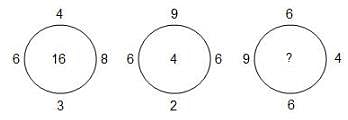
In each of the following questions, select a figure from amongst the four alternatives, which when placed in the blank space of figure (X) would complete the pattern.
Identify the figure that completes the pattern.

In the following question, select a figure from amongst the four alternatives, which when placed in the blank space of fig. (X) would completer the pattern.
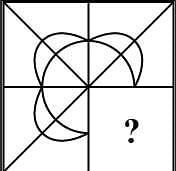
In each of the following questions, select a figure from amongst the four alternatives, which when placed in the blank space of figure (X) would complete the pattern.
Identify the figure that completes the pattern.

Starting from a point X Jayant walked 15 metres towards West, he turned to his left and walked 20 metres. He then turned to his left and walked 15 metres. He then further turned to his right and walked 12 metres. How far is Jayant from the point X and in which direction?
Direction: Study the following information and answer the given questions carefully.
Eight books S, E, M, T, N, O, H and Z are lying on the table such that E is 12cm north of M, which is 10cm to the west of T. Z is 10cm east of T. S is to the north of Z. H is to the south of Z. O is 20cm west of N, which is 5cm south of T. S is to the east of E. N is to the west of H.
Q. In which direction is O with respect to E?
If a man on the moped starts from a point and rides 4km south, then turns left and rides 2km, then turn again to the right to ride 4km more, towards which direction is he moving?
If A is to the south of B, and C is to the east of B, in what direction is A with respect to C?
Direction: Read the given instructions carefully and answer the questions given beside.
Seven friends P, Q, R, S, T, U and V visits zoo on seven different days of the same week starting from Monday. Who visits the zoo on Sunday?
I. S visits the zoo immediately before Q, who visits on Friday. Two persons visit between S and V.
II. Only two people visits zoo after R. V visits zoo two days before R. Three people visits zoo between V and Q.
Direction: Read the given instructions carefully and answer the questions given beside.
The conclusion H < D is definitely followed by which of the following statements?
I. C = X ≤ D ≥ R
II. R > Z = O > H
Directions: Each of the following consists of a question and two statements numbered I and II given below it. You have to decide whether the data provided in the statements are sufficient to answer the question:
Six persons from U to Z sit around a circular table facing towards the center. What is the position of X with respect to Y?
Statement I: U faces X, who is second to the right of W. 2 persons sit between Z and Y, who is an immediate neighbour of V.
Statement II: X and W are not immediate neighbours. Y faces Z, who is 2nd to the left V. U is a neighbour of W.





